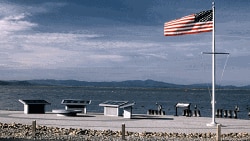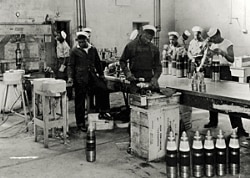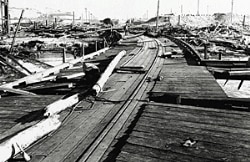When it comes to national parks, Americans are used to spectacular vistas, dramatic sunsets, photogenic vegetation, and lots of wildlife.
But none of these images fits the nation's newest national park, which Congress approved in November. It has no mountains – no mountain lions or other wild creatures. There's not a lot to photograph, either. You need a reservation to get in, and you have to wait two weeks to do so!
A strange kind of park, indeed!
The site is the Port Chicago Naval Magazine, which, to make things even more interesting, lies nowhere near Chicago! It's located on an active army base on California's San Francisco Bay. That explains the need for reservations and the two-week delay so that the Army can run security checks on visitors.
The surroundings are pretty drab, but there's an awful lot of history at this place. It was there, on a July day in 1944, that 320 men died – instantly, in most cases – when bombs equipped with warheads being loaded onto two ships at what was then a navy yard exploded in a huge fireball. Four hundred others were injured, and both ships were obliterated. It was the largest disaster on the American homefront during World War Two.
Two-thirds of the victims were African Americans who, the Navy admitted, had little or no training in handling explosives. They thought they were loading inactive munitions. Fifty other men who survived and refused to return to their perilous jobs were court-martialed, convicted, and spent the rest of the war in jail.
The events trained a spotlight on the military's racial practices. In 1948, President Harry Truman ordered an end to racial segregation throughout the armed services and federal government.
There won't be much to see at the new Port Chicago Naval Magazine National Park, since a lot of what was there blew up. There's a granite memorial, some old pier pilings, a few boxcars, and remnants of a loading dock. But the National Park Service hopes to build and staff a visitor center – probably outside the army base where people can stop in any time.
Read more of Ted's personal reflections and stories from the road on his blog, Ted Landphair's America.







